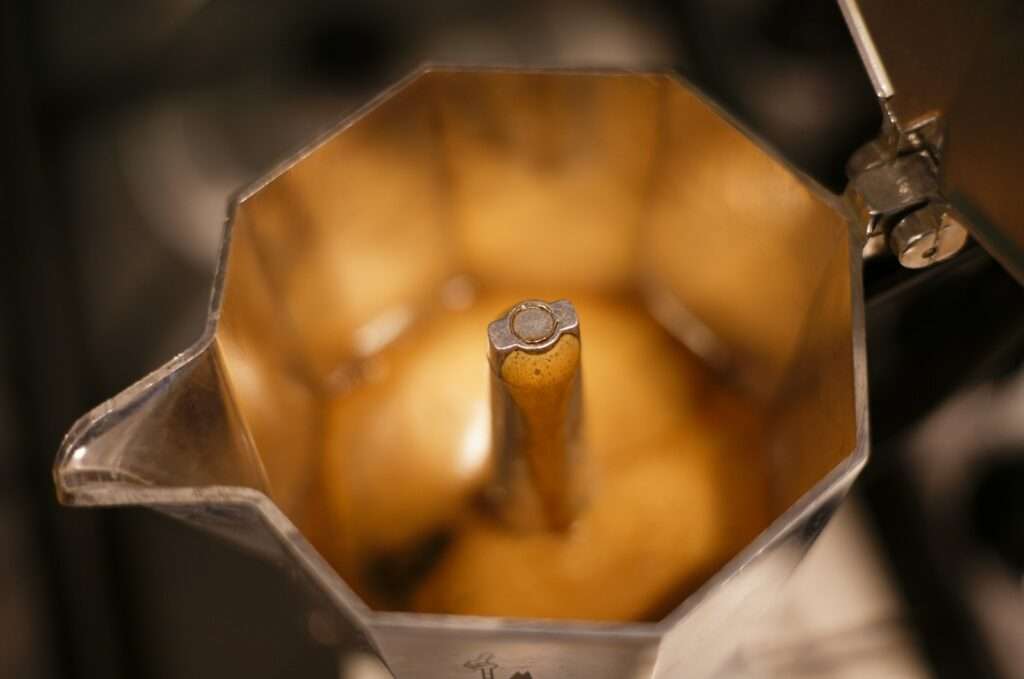
How to Yemeni Coffee: A Guide to Authentic Mocha Delights!
Whether you’re a seasoned coffee connoisseur or just beginning to explore the vast world of coffee, the quest for that perfect cup is a journey worth taking. Welcome to a guide that transcends the ordinary – a guide on how to make Yemeni coffee. Join me as we unravel the layers of tradition and flavor that make Yemeni coffee a unique and enriching experience.
Table of Contents
- Essential Equipment for Brewing Yemeni Coffee
- Understanding Your Cup: An Intro to Yemeni Coffee
- Step by Step Guide on How to Make Yemeni Coffee
- Frequently Asked Questions: Demystifying Yemeni Coffee
- What is unique about Yemeni Coffee?
- How is Yemeni Coffee traditionally prepared?
- Why is Yemeni Coffee considered rare?
- What are the flavor profiles of Yemeni Coffee?
- Where can I buy Yemeni Coffee?
- How should I brew Yemeni Coffee for the best taste?
- Can Yemeni Coffee be used for espresso?
- How is Yemeni Coffee harvested?
- Is Yemeni Coffee organic?
- Embrace the Experience: A Cultural Journey with Yemeni Coffee
Essential Equipment for Brewing Yemeni Coffee
Before embarking on the captivating journey of how to make Yemeni coffee, it’s essential to gather the right tools. Each piece of equipment plays a vital role in capturing the nuanced flavors and aromas that define Yemeni coffee. From a meticulous coffee grinder to a temperature-controlled kettle, we’ll ensure you are equipped for success in your brewing adventure.
- Coffee grinder: Opt for a burr grinder, prized for its consistency in achieving the perfect grind size.
- Scale: A digital scale becomes your precision partner, ensuring accurate measurements for that ideal cup.
- Pour over cone and filter: A necessary duo for the pour-over method, unlocking the best in Yemeni coffee.
- Kettle: Elevate your brewing game with a kettle that controls temperature precisely, a key element for Yemeni coffee perfection.
- Coffee beans: Essential, and notably, the distinct Yemeni coffee beans known for their wine-like quality and bright acidity.
Acquiring these tools sets the stage for our exploration into the intriguing history and distinctive brewing methods of Yemeni coffee. Let’s delve into the heart of how to make Yemeni coffee and uncover its captivating secrets.
Understanding Your Cup: An Intro to Yemeni Coffee
In the vast expanse of coffee diversity, each region tells a unique story through its flavors and brewing methods. Yemen, often hailed as the birthplace of coffee, beckons us to explore the intricacies of its coffee-making tradition. Join us as we unravel the tapestry of how to make Yemeni coffee, unlocking the secrets that make each cup a testament to the country’s enduring coffee heritage.
A Sip Through Time: The Rich History of Yemeni Coffee
In the narrative of coffee’s global journey, Yemen emerges as a historical epicenter, claiming the title of the birthplace of this beloved beverage. The story of how to make Yemeni coffee is intertwined with a legacy that dates back to the 15th century.
A Brief History of Yemeni Coffee
Wander through the ancient landscapes of Yemen, and you’ll find the roots of coffee cultivation taking hold in its fertile soils. It’s widely believed that Yemeni coffee, often referred to as Mocha coffee, was first cultivated in the 15th century. Picture bustling markets and aromatic coffee houses in the port city of Mocha, where this precious commodity was traded, lending its name to a style of coffee cherished across the globe.
Yemeni coffee, with its intricate tale, holds a place of honor among the oldest coffee-growing regions globally. The process of cultivating and trading coffee beans became an art form, creating a cultural heritage that continues to flourish to this day.

Characteristics of Yemeni Coffee
Before we delve into the brewing alchemy of how to make Yemeni coffee, understanding its distinctive characteristics is essential. Picture a cup with a full-bodied richness, a symphony of complex flavors dancing on your palate. Yemeni coffee is often likened to a fine wine, boasting qualities that set it apart:
- Flavor: Full-bodied and rich, offering a harmonious blend of complex notes.
- Aroma: Unmistakable, often described as having a wine-like quality that heightens the sensory experience.
- Bean: Distinguished by its traditional sun-drying process, an age-old technique contributing to its unique flavor profile.
As we venture into the next steps of how to make Yemeni coffee, keep these characteristics in mind, for they are the essence of the Yemeni coffee experience. Let’s unlock the door to the intriguing brewing methods that bring this captivating history to life in every aromatic cup.
Step by Step Guide on How to Make Yemeni Coffee
With the backdrop of Yemen’s rich coffee history and the distinctive characteristics of Yemeni coffee in mind, let’s embark on the practical journey of brewing your own cup of liquid poetry. Here’s a comprehensive step-by-step guide on how to make Yemeni coffee and bring the enchantment of Yemen’s coffee culture into your home.
Step 1: Start with Whole Yemeni Coffee Beans
Begin your Yemeni coffee adventure with the foundation – the coffee beans. Opt for high-quality Yemeni coffee beans, known for their wine-like attributes and bright acidity. To preserve the essence of these beans, grind them just before you’re ready to brew, ensuring a fresh and flavorful start to your coffee-making process.
Step 2: Use Fresh, Cold Water
The quality of water can significantly impact the taste of your coffee. Opt for fresh, cold water to ensure a clean canvas for the intricate flavors of Yemeni coffee to unfold. This simple yet crucial step sets the stage for a delightful brewing experience.
Step 3: Measure with Precision
For every cup of water, use two tablespoons of coffee. This ratio ensures a strong, full-bodied brew that captures the essence of Yemeni coffee. Employ a digital scale to measure both the coffee and water accurately, guaranteeing consistency and perfection in every cup.
Step 4: Brew using Your Preferred Method
Now comes the moment of choice. Yemeni coffee is versatile, allowing you to choose a brewing method that suits your preferences. Whether it’s a traditional coffee pot, a French press, or an espresso machine, the method is a personal touch to your Yemeni coffee journey.
Step 5: Let it Rest and Develop Flavors
After the brewing process is complete, let your coffee rest for a few minutes. This crucial step allows the flavors to fully develop, enhancing the richness and complexity of your Yemeni coffee. Patience is a virtue in the world of coffee craftsmanship.
Step 6: Pour and Enjoy
Finally, pour your meticulously brewed Yemeni coffee into a pre-warmed cup. As you sit back and savor the moment, you’re not just enjoying a beverage – you’re indulging in a piece of Yemen’s illustrious history, a tradition steeped in flavor and culture.
Each sip is a journey to the heart of Yemen, a testament to the meticulous process that transforms simple beans into a work of art. As you revel in the intricate flavors, you’ll find that how to make Yemeni coffee is not just a process; it’s an expression of an ancient art form that has stood the test of time. Happy brewing, and may each cup be a celebration of Yemeni coffee’s enduring allure.

Frequently Asked Questions: Demystifying Yemeni Coffee
As you delve into the art of making Yemeni coffee, it’s natural to have questions. Let’s unravel the mysteries surrounding Yemeni coffee with answers to some frequently asked questions, providing clarity and insights into this captivating brew.
What is unique about Yemeni Coffee?
Yemeni coffee, often overlooked, boasts a distinctive flavor profile that sets it apart from any other coffee worldwide. Its rich, wine-like attributes, coupled with its aromatic intensity, make it a must-try for any coffee enthusiast. Additionally, the traditional growing and processing methods contribute to its unique taste and quality.
How is Yemeni Coffee traditionally prepared?
Traditionally, Yemeni coffee is ground into a fine powder and boiled in a pot called a ‘jebena.’ The coffee is then served in small cups, often with spices like cardamom or cinnamon. This preparation method further enhances the deep, complex flavors of Yemeni coffee.
Why is Yemeni Coffee considered rare?
Yemeni coffee’s rarity is primarily due to the country’s ongoing conflict and challenging growing conditions. This has significantly impacted production, making it a sought-after commodity in the coffee world. Despite the hurdles, Yemeni farmers remain committed to cultivating this exceptional coffee varietal.
What are the flavor profiles of Yemeni Coffee?
Yemeni coffee is renowned for its spice-laden, wine-like flavor that is both bold and complex. It often carries notes of dried fruit, chocolate, and wild honey, with a bright acidity that balances out its robust body beautifully. Truly, each sip is a sensory journey to the heart of Yemen.
Where can I buy Yemeni Coffee?
While Yemeni coffee can be challenging to find, several online retailers and specialty coffee shops do offer it. Be sure to buy from a reputable source to ensure you are getting authentic Yemeni coffee.
How should I brew Yemeni Coffee for the best taste?
When brewing Yemeni coffee, it’s recommended to use a manual brewing method, such as a French press or pour-over. This allows the intricate flavors to fully develop. Additionally, using freshly ground beans can significantly enhance the coffee’s flavor.
Can Yemeni Coffee be used for espresso?
Absolutely! Yemeni coffee’s bold, rich flavors make it an excellent choice for espresso. Its unique taste profile can add a new dimension to your regular espresso shot. However, due to its complex flavors, it may not be everyone’s first choice for a straight espresso.
How is Yemeni Coffee harvested?
Yemeni coffee is typically hand-harvested by the farmers. The cherries are picked at the peak of their ripeness to ensure the best quality. After harvesting, the coffee undergoes a natural drying process, often in the sun on rooftops, which contributes to its unique flavor.
Is Yemeni Coffee organic?
While not all Yemeni coffee is certified organic, many farmers in Yemen use traditional farming methods, avoiding the use of chemical fertilizers and pesticides. This not only contributes to the coffee’s unique flavor but also makes it a more sustainable choice.
Embrace the nuances of Yemeni coffee as we address common queries, providing you with a deeper understanding of the intricacies that make this beverage a true gem in the world of coffee. Whether you’re a seasoned enthusiast or a curious beginner, let’s demystify Yemeni coffee together.
Embrace the Experience: A Cultural Journey with Yemeni Coffee
As we navigate through the aromatic trails of Yemeni coffee, it becomes evident that this beverage is more than just a drink – it’s a cultural experience deeply woven into the fabric of Yemen’s history and traditions. Let’s explore the cultural nuances surrounding Yemeni coffee and how its resurgence is influencing coffee culture worldwide.
Coffee as a Cultural Ritual in Yemen
In Yemen, coffee is not merely a morning pick-me-up; it’s a ritual, a social affair, and an integral part of hospitality. Whether shared among family and friends or served to guests, Yemeni coffee is a symbol of warmth and connection. The brewing process itself is considered an art form, a way of honoring the legacy passed down through generations.
As Yemeni coffee makes a triumphant comeback in the U.S. and beyond, these cultural practices are gaining prominence. Coffee enthusiasts are not only savoring the unique flavors but also embracing the communal aspect that comes with a cup of Yemeni coffee. It’s a journey beyond taste – a journey into the heart of Yemen’s coffee culture.
New Techniques, Time-Honored Traditions
In a somewhat modern twist, Yemeni coffee is adapting to contemporary preferences. While the traditional brewing methods hold their revered space, there’s room for experimentation. One such variation is Qishr, also known as Yemeni ginger coffee, offering a sweet tasting alternative to the classic brew. Qishr is not just a coffee substitute; it’s a testament to Yemen’s innovation in the realm of coffee.
Qishr: A Sweet Symphony
Qishr is prepared with the outer shell of the coffee bean, known as the husk, and infused with ginger and sugar. This sweet elixir, often served in small espresso-sized cups, introduces a delightful twist to the Yemeni coffee repertoire. The process of boiling and resting the mixture multiple times brings out bold and flavorful notes, turning the preparation of Yemeni coffee into a respected and time-honored tradition.
Bringing Yemeni Coffee Home
As Yemeni coffee culture finds its way into homes worldwide, enthusiasts are not only adopting traditional brewing techniques but also adding personal touches. Some may introduce spices like cinnamon or cardamom to tweak the flavor profile, while others opt for a creamier texture by adding milk. The core process remains the same, a nod to the enduring legacy of Yemeni coffee-making.
Join the Conversation
Diving into the world of Yemeni coffee is not just an exploration of taste; it’s an immersion into culture and history. Has this article sparked your interest in Yemeni coffee? Are there specific aspects that captivated your attention, or perhaps you’ve experimented with Yemeni coffee at home?
We invite you to share your thoughts and experiences. Visit Ten Coffees, scroll down to the comments section, and let your insights flow. Together, let’s build a vibrant community of coffee lovers, sharing stories and tips on how to make Yemeni coffee a cherished part of our daily rituals.
Remember, each cup of coffee tells a tale, and we’re thrilled to be a part of your journey in discovering them. Happy brewing, and we look forward to hearing from you at Ten Coffees!









